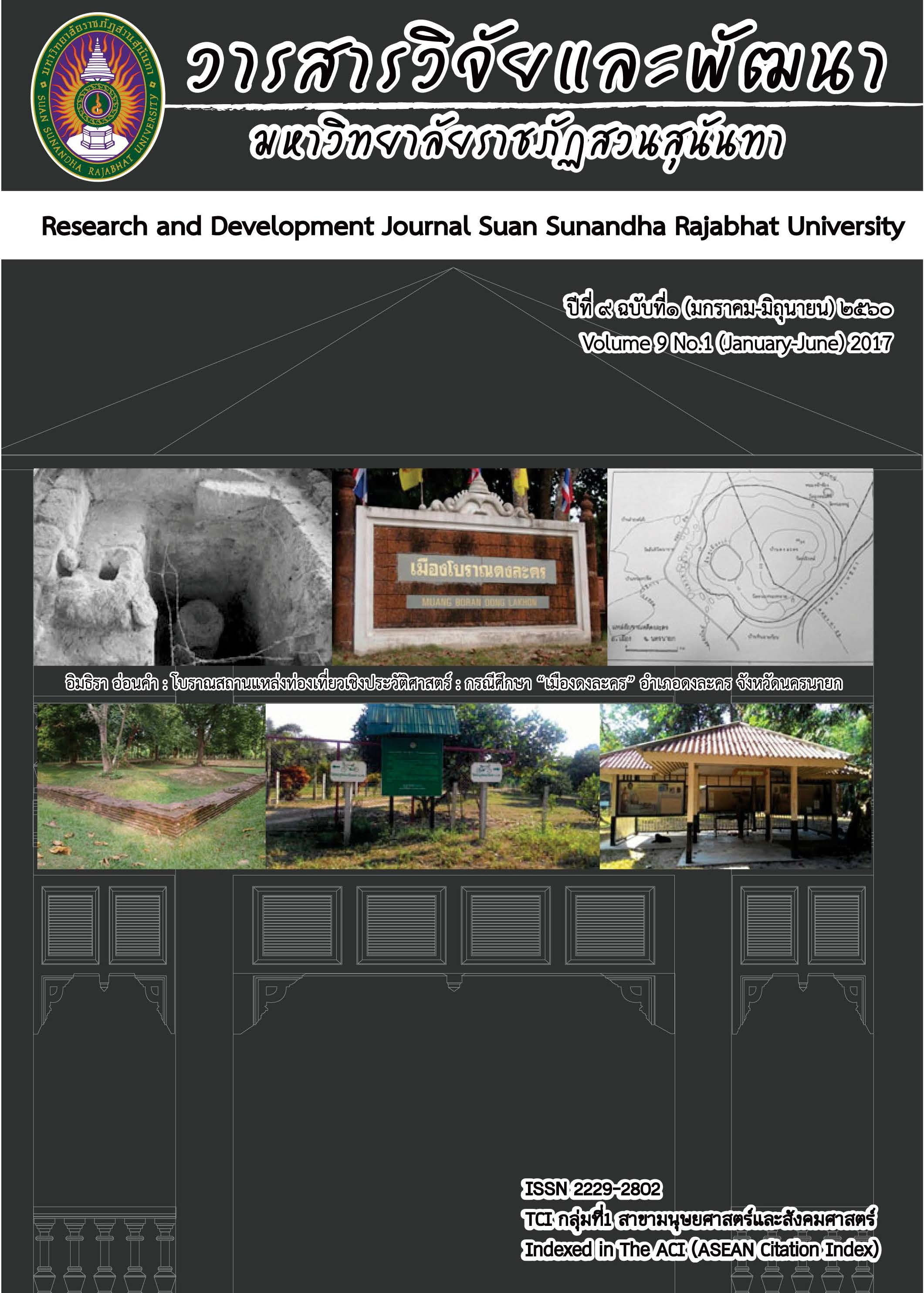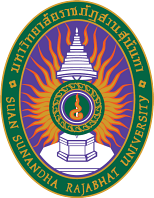A Causal Relationship Model of Instructional Leadership of Administrators and the School Climate Affecting the Effectiveness of World–Class Standard Schools in Thailand
DOI:
https://doi.org/10.53848/irdssru.v9i1.213793Keywords:
Instructional leadership, School Climate, Effectiveness.Abstract
This research aimed to: 1) study the level of instructional leadership of
administrators, school climate and effectiveness of World Class Standard Schools in
Thailand; 2) study the causal relationship of instructional leadership and the school
climate affecting the effectiveness of World–Class Standard Schools in Thailand. This
research was a quantitative research. The instrument used was a questionnaire with
0.89 reliability. The sample was 910 school administrators, deputy school
administrators, and head teachers in 91 Primary World-Class Standard Schools in
Thailand during academic year 2015. The statistics used for data analysis were
percentage, mean, standard deviation, and structural equations model (SEM). The
results showed that 1) the level of instructional leadership, school climate and the
effectiveness of World–Class Standard Schools in Thailand were at a high level. 2)
Instructional leadership had a direct effect and indirect effect on the effectiveness of
World–Class Standard Schools in Thailand with a statistical significance at the 0.05
level. 3) The school climate had a total effect and direct effect on the effectiveness of
World–Class Standard Schools in Thailand with a statistical significance at the 0.05
level. 4) A causal relationship model of instructional leadership of administrators and
school climate affecting the effectiveness of World–Class Standard Schools in Thailand
were consistent with the empirical data.
References
for educational administrator.
Chonburi: MontreePublishing co.,Ltd.
Betty, T. and A. Herron. (2004). School
climate and learning. UniversityCommunity Partnerships, Michigan
State University.
Chayannakhorn, A. (2001). The relationship
between administrative behavior
of the administrators and school
effectiveness. The School of Saint
Gabriel’s Foundation Thailand.
Duttweiler, D.C. (1988). Dimensions of
effective leadership. Austin, TX:
Southwest Educational Development
Laboratory.
Elfstrom, L. (2007). Bullying and
victimization: school climate
matters. London: Routledge.
Fox, E.L. (1973). “A simple accurate
technique for predicting maximal
aerobic power. Journal of Applied
Physiology. 35, 914-916.
Hall, Peffer and PuterNorris. (1993).
leanning for leadership.Leadership &
Organization Journal. 14(7), 35-40.
Hallinger, J.S. and Murphy, S.L.(1985).
Work stress and social support.
reading. Massachusetts: Addison–
Wesley Publishing Company.
Halpin, A. W. (1966). Theory and
research in administration. New
York: The Macmillan Company.
Hersey, P. and H. B Blan (1988).
Management of organizational
behavior: utilizing human
resources. Englewood. Boston:
PWS Kent.
Hersey, P., and Blanchard, K.H. (1996).
Management of organizational
behavior utilizinghuman
resources. (2nded.). Needham
Heights, MA: Pearson Education.
Holt.,R.K., C.B. Hind. (1994). Dictionary of
behavior science. New York: Von
Nestrend Reinhold Company.
House, J. S. (1981). Work Stress and
social support. New Jersey:
Prentice Hall .
Hoy, Wayne K. and Cecil G. Miskel.
(2001). Educational administration
(6thed.). Singapore: McGraw–Hill.
Janiaem, I. (2015). Administrative
behavior and school climate
affecting effectiveness ecclesiastical
schools general education
program under the nation office
of buddhism. Thesis in Doctorate
of Education (Education
Administration) Kasetsart University.
Jensen, C. (1996). Delphi in Depth: Power
Techniques from the Experts
Berkeley. Singapore: McGraw – Hill.
Kareevate,S. (2015). A causal model of
factors influencing educational
effectiveness of private primary
schools in bangkok. Thesis in
Doctorate of Education Kasetsart
University.
Kgaile, A., and K. Morrison. (2006).
“Measuring and targeting internal
conditions for school effectiveness
in the free state of South Africa.
Educational Management
Administration and Leadership,
34 (1), 47-68.
Khiawsri, P. (2005). The model developed
leadership of executive education.
Bangkok: Teachers Institute Teachers
and Educational Personnel
Maslow, A. H. (1970). Motivation and
personality. New York: Harper and
Row Publishers.
Nitiprasert, P. (2000). Keep the leadership
and organization of the learning
effectiveness. Elementary Schools
Under the Office of Basic
Education. Development Area in
East Coast: Education: Master's
thesis Field of Education Burapa
university.
Oonwiset, O. (2002). Quality of work life
of teachers affect the
effectiveness of the office of
educational service area 3 Sakon
Nakhon. Master of Arts thesis
collection Field of Education Sakon
Nakhon Rajabhat University.
Pongsriwats, S. (2005). Leadership theory
and practice: the art and science
leadership complete. edition2.
Bangkok: Wirateducation Limited.
Rattanachuwong, P. (2012). Causal
factors on sense of academic
optimism affecting professional
commitment and teaching
effectiveness of teachers in
secondary school of upper
northern provinces. Thesis in
Doctorate of Education (Education
Administration) Kasetsart University.
Smith, D. J., and Tomlinson, S. (1989).
The school effect: a study of
multi-racial comprehensives.
London: Policy Studies Institute.
Suntiwong, T. (1994). Organization and
management.Bangkok: Thaiwattanapanich.
Van Deventer, J, and Kruger, A.G. (2003).
An educatior’s guide to school
management skills. Pretoria: Van
Schalk.
Vitayaudom, W. (2007). Organization
behavior. Bangkok: Theera film &
Scitex Co.,Ltd.
Wangkhahat, S. (2010). The development
of school education standards.
secondary educational service
area office, area 22. Presentation
Secondary Research Area Office
Area 22. Mukdahan.
Weber, J. (1989). Leading the
instructional program. In S.C.
Smith and P.K. Smith (Eds.), School
leadership: H and book for
Excellence (pp. 191–224). Eugene,
OR: ERIC Clearinghouse on
Educational Management. (ERIC
Documen Reproduction. Service
No. ED309513).
Wongwanich, S. (2003). Classroom action
research. Bangkok: Chulalongkorn
University.
Downloads
Published
How to Cite
Issue
Section
License
บทความที่ได้รับการตีพิมพ์เป็นลิขสิทธิ์ของ สถาบันวิจัยและพัฒนา มหาวิทยาลัยราชภัฎสวนสุนันทา
ข้อความที่ปรากฏในบทความแต่ละเรื่องในวารสารวิชาการเล่มนี้เป็นความคิดเห็นส่วนตัวของผู้เขียนแต่ละท่านไม่เกี่ยวข้องกับมหาวิทยาลัยราชภัฎสวนสุนันทา และคณาจารย์ท่านอื่นๆในมหาวิทยาลัยฯ แต่อย่างใด ความรับผิดชอบองค์ประกอบทั้งหมดของบทความแต่ละเรื่องเป็นของผู้เขียนแต่ละท่าน หากมีความผิดพลาดใดๆ ผู้เขียนแต่ละท่านจะรับผิดชอบบทความของตนเองแต่ผู้เดียว






